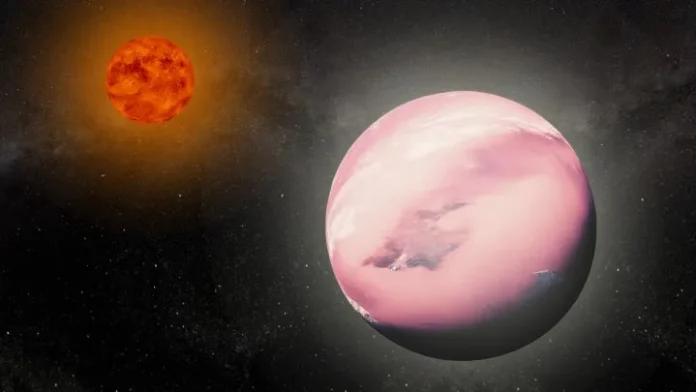Scientists have discovered an exoplanet that bears a striking resemblance to cotton candy. Named WASP-193b, this planet is also the second-lightest exoplanet ever found. Despite being about 1.5 times the width of Jupiter, WASP-193b only has one-tenth of its mass.
Details:
- Unique Characteristics of WASP-193b:
- Among the 5,400 exoplanets discovered so far, WASP-193b is only surpassed in mass by a Neptune-like planet called Kepler 51d.
- Located approximately 1,200 light-years away from Earth, WASP-193b orbits its star at a distance of 10.13 million kilometers and completes one full revolution in just 6.2 days.
- WASP-193b falls into a category known as “Puffy Jupiters,” representing the extremes of this planet class.
- Discovery and Observations:
- Scientists utilized the Wide Angle Search for Planets (WASP) system, consisting of two robotic observatories and telescopes—one in the northern hemisphere and the other in the southern—to discover WASP-193b.
- The planet’s mass was determined by observing the gravitational force it exerts on its star as it orbits.

Similarity to Cotton Candy: Under normal circumstances, such large planets would exert a significant gravitational influence on their stars. However, WASP-193b’s low mass and density made it challenging for scientists to detect this effect accurately, taking four years to confirm. Francisco Pozuelos, a senior researcher at the Astrophysics Institute of Andalusia, stated that the current theories cannot adequately explain the nature of WASP-193b, as it contradicts them all. Scientists estimate WASP-193b’s density to be only 0.059 grams per cubic centimeter, compared to approximately 0.05 grams per cubic centimeter for cotton candy and 5.5 grams per cubic centimeter for Earth. Hence, likening this planet to cotton candy seems fitting.
Future Investigations: While WASP-193b is believed to consist mostly of hydrogen and helium like Jupiter and other gas giants, its formation and atmospheric composition remain mysteries. Researchers are eager to conduct further investigations using tools such as the James Webb Space Telescope to gain a deeper understanding of this enigmatic planet.
This discovery opens new avenues for exploration and challenges existing theories about planetary formation, promising exciting insights into the diversity of exoplanets in our universe.

